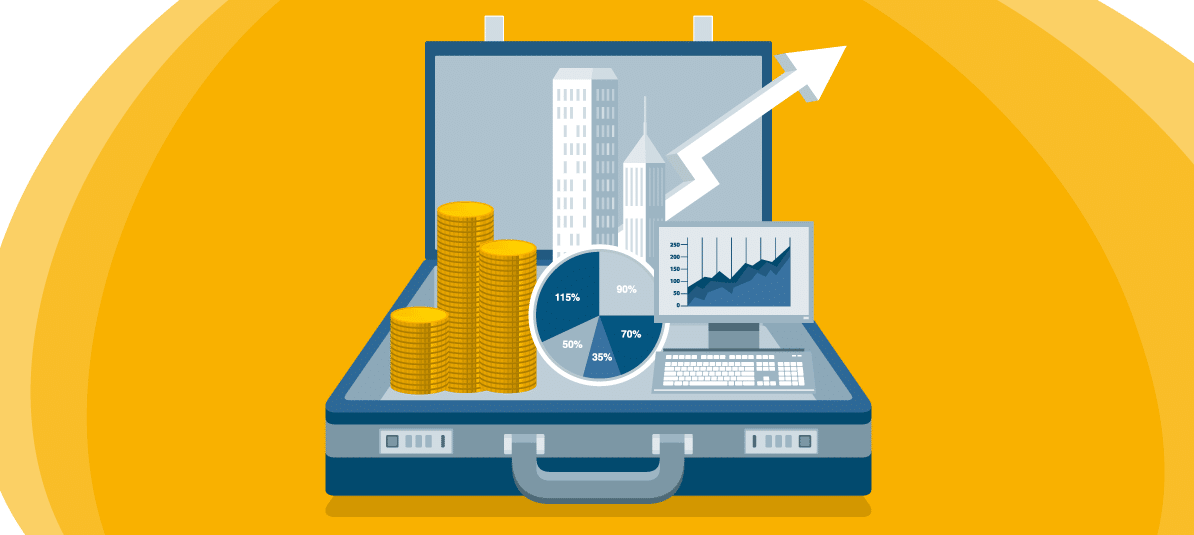Which products should you use for your retirement?

Investing is one of the most affordable options when it comes to supplementing your state pension and having the money you will need when you retire. The big question for most is how and where to do it. In other words, which financial products are best suited for planning retirement savings?
In general, we are used to linking retirement with pension plans when, in reality, there are many more investment options available. Before putting names to them, it is important to know the ideal characteristics that these investment vehicles should have.
What to look for when choosing a retirement product
Retirement is typically a long-term goal, not something that’s just around the corner.
This implies that the ideal products will be those that invest for the long term, although it is also true that you should adjust the investment risk to your age as time passes.
To this can be added tax deferral, which is the possibility of delaying the payment of taxes in order to take better advantage of compound interest.
Basically, not all retirement investment products pay the same taxes at the same time. There are some where you will have to pay each time you buy or sell, like shares; and others where you will only pay at the end, like mutual funds.
The difference between them is enormous in the long term. This is what would happen with 10,000 euros invested over the long term with a constant return of 8.5% over 25 years.
| No tax deferral | ||||
|---|---|---|---|---|
| Accumulated capital | Gross return | Taxes | Real return (after taxes) | |
| Year 1 | 10,000.00 € | 1,000.00 € | 190.00 € | 810.00 € |
| Year 2 | 10,810.00 € | 1,081.00 € | 205.39 € | 875.61 € |
| Year 3 | 11,685.61 € | 1,168.56 € | 222.03 € | 946.53 € |
| Year 5 | 12,632.14 € | 1,263.21 € | 240.01 € | 1,023.20 € |
| Year 10 | 18,646.85 € | 1,864.69 € | 354.29 € | 1,510.40 € |
| Year 15 | 27,525.42 € | 2,752.54 € | 522.98 € | 2,229.56 € |
| Year 20 | 35,433.86 € | 3,011.88 € | 572.26 € | 2,439.62 € |
| Year 25 | 49,431.33 € | 4,201.66 € | 798.32 € | 3,403.35 € |
| Total | 52,834.67 € | 52,882.31 € | 10,047.64 € | 42,834.67 € |
| With tax deferral | ||||
|---|---|---|---|---|
| Accumulated capital | Gross return | Taxes | Real return (after taxes) | |
| Year 1 | 10,000.00 € | 1,000.00 € | - € | 1,000.00 € |
| Year 2 | 11,000.00 € | 1,100.00 € | - € | 1,100.00 € |
| Year 3 | 12,100.00 € | 1,210.00 € | - € | 1,210.00 € |
| Year 5 | 13,310.00 € | 1,331.00 € | - € | 1,331.00 € |
| Year 10 | 21,435.89 € | 2,143.59 € | - € | 2,143.59 € |
| Year 15 | 34,522.71 € | 3,452.27 € | - € | 3,452.27 € |
| Year 20 | 47,115.63 € | 4,004.83 € | - € | 4,004.83 € |
| Year 25 | 70,845.74 € | 6,021.89 € | - € | 6,021.89 € |
| Total | 76,867.62 € | 66,867.62 € | 14,259.55 € | 52,608.07 € |
That is why it is so important to know how to choose the right investments for retirement and how each financial product is taxed.
7 investment alternatives for retirement
With the previous recommendations in mind, what are the best savings and investment products for retirement? These are some options with their advantages and disadvantages:
Pension Plans
These are the most traditional product, but they have been losing strength in recent years as the amounts that can be contributed to individual pension plans have been cut back to the current maximum of 1,500 euros.
To compensate for these cuts in individual pension plans, the limit that can be invested in occupational pension plans, which are those promoted by companies for their workers, has increased, as well as the new simplified occupational pension plans (PPES), which can be joined by the self-employed and other groups.
As an investment, pension plans have the tax advantage of allowing you to deduct the contributions in your income tax return. On the other hand, they are a less liquid product than others, since you will not be able to recover the investment at any time.
Pension plans can only be withdrawn under certain circumstances or after 10 years from the first contribution (provided the plan was taken out in 2015 or later). This, which may seem like a disadvantage, also has a positive side. It ensures that you will not use that money for anything other than retirement.
Insured Pension Plan or PPA (Plan de Previsión Asegurado)
These can be defined as the insurance sector’s alternative to pension plans. They enjoy the same tax advantages and also the same liquidity as a pension plan.
The biggest difference is that a PPA is integrated into a life-savings insurance policy that guarantees the interest rate.
Systematic individual savings plan o PIAS (Plan Individual de Ahorro Sistemático)
Another life-savings insurance that can also be adapted to different user profiles. Unlike the two previous ones, it does not allow income tax deductions for the contributions made.
However, it has tax advantages at maturity if it is cashed in as a Life Annuity. And, in addition, you can change PIAS without having to pay tax on those changes. Investment in PIAS is limited to 5,000 euros per year per person and a maximum of 240,000 euros in total per policy.
PIAS have the advantage of saving you a lot of tax if they are paid out in the form of an annuity, although this is something that can also be done with other products such as investment funds or shares. In this case, the yield generated in a PIAS is tax free.
In addition, PIAS are a liquid product that allows you to access your money at any time.
Investment funds
One of the most versatile products due to the offer available, liquidity and tax advantages. In essence, funds invest their participants’ money in a basket of assets ranging from equities to fixed income, including other investment funds.
That makes them a very diversified product from the outset. In addition, they have an important tax benefit, since you do not have to pay income tax on the profit you make if you reinvest it in another fund (you transfer it instead of redeeming it).
In addition to this, there is a wide range available, as there are funds for all investment profiles and even funds that specialize in particular sectors, companies that pay dividends and specific investment strategies, for example.
In this article you can find out more about how an investment fund works and its advantages.
ETFs
ETFs or exchange-traded funds are investment funds that behave and are taxed like shares. This means that they do not have the tax deferral advantage inherent to investment funds.
But they do have another advantage: much more affordable fees, which is important in the long term. The reason for this is that ETFs typically focus on passive investment. This means they replicate stock market or sector indices. This makes them an ideal complement to a portfolio of investment funds, for example.
Unit-linked plans
Unit Linked funds can be said to be another model of investment in funds. Unit Linked funds are life-savings insurance policies that invest in baskets of funds which are usually managed by professionals and are suitable for each customer’s profile. There are also types where the customer actually chooses the composition of their portfolio from a basket of funds.
Like life insurance, Unit Linked funds allow you to choose the beneficiary in the event of your death, something that is not possible when investing directly in investment funds.
Stocks and shares
Another investment product for retirement is direct investment in the stock market via shares. The main disadvantage of this option is that it requires more knowledge, more dedication to manage the portfolio, and shares do not have the advantage of tax deferral.


